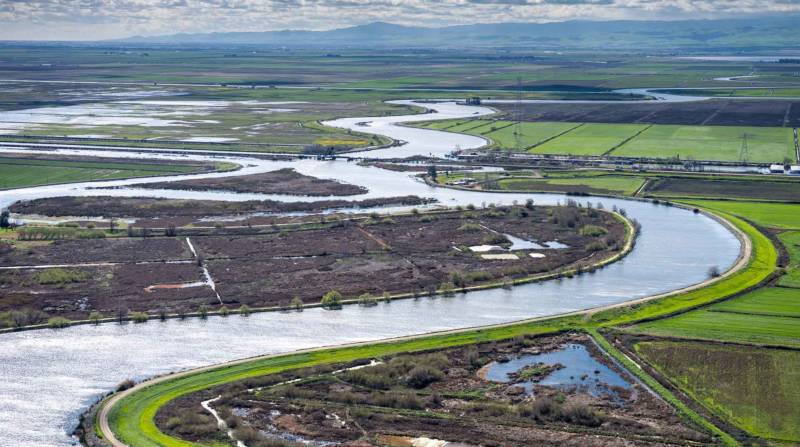They must ensure it doesn’t drive threatened species, like endangered salmon and delta smelt, to extinction. If the plan jeopardizes the future of endangered fish, these biologists are required to put limits on it, like restricting how much water can be pumped to farms from the state’s rivers.
“We believe the record will ultimately show that the Trump Administration simply didn’t like the truth, and so they’re taking steps to replace their own staff who told the truth with new staff who will give them an answer they want to hear,” said John McManus, president of the Golden Gate Salmon Association.
The U.S. Fish and Wildlife service declined an interview but responded in an email to questions about the purpose of the delay.
“This is about taking the time we need to ensure we get this right,” said Paul Souza, regional director at the U.S. Fish and Wildlife Service. “The decision was made to bring in a mix of additional expertise in science, law, policy and regulation to help our local representatives work through finalizing the biological opinions and to help ensure the highest quality of our respective biological opinions and underlying individual agency decisions.”
Souza also wrote that the new team will be “working with” the original team of scientists.
‘We Will Have It Done Very, Very Quickly’
President Trump in October 2018 ordered the incredibly complex rules governing California’s water supply to be drafted faster than ever before.
“We will have it done very, very quickly,” Trump said to members of the California GOP congressional delegation last October, as he signed an executive order. “I hope you enjoy the water that you’re going to have.”
Some see the fingerprints of Interior Secretary David Bernhardt; he is under scrutiny after a February New York Times story reported that shortly after joining the Interior Department in 2017, he directly advocated on behalf of his former employer, the agricultural giant Westlands Water District, to get more water for farmers at the expense of endangered fish, even though federal rules preclude him from lobbying.
The proposed water rules govern a delicate balancing act, determining how much water is pumped to cities and farmland and how much must remain in the Sacramento-San Joaquin Delta ecosystem for threatened wildlife, like endangered salmon. That’s made the rules a target for Central Valley agricultural interests, because in dry years, the rules can limit their water supply.
Under Trump’s new plan, the federal government is proposing to pump more water from the Sacramento-San Joaquin Delta, an estuary that is the hub of the state’s water supply.
According to emails obtained last winter by KQED, NOAA Fisheries scientists were concerned they didn’t have the resources to analyze the plan.
Independent scientific reviewers who evaluated the government’s plan also said the tight timeline hurt their ability to thoroughly vet it, according to other documents obtained by KQED. Several also wrote that the plan could have a devastating impact on fish species.
Nonetheless, in late June, the federal scientists’ analyses, known as “biological opinions,” were nearly complete.
Then in early July, the government called for an unexpected two-month delay. A predominantly new group of 12 federal employees had taken over, made up of lawyers, biologists and staff, several from outside of California.
“We now have the chance to improve these important documents even more,” Souza wrote to the new team in the email obtained by KQED. “These ‘fresh eyes’ — in concert with our local experts — will help ensure the highest quality of our respective documents and ultimate individual agency decisions.”
As part of the two-month extension, the new federal team will seek a new independent scientific review, and, by law, will also seek feedback from the agricultural water districts who use the water.
In late 2018, Souza was designated as the lead official to carry out Trump’s October water memo, which, in addition to imposing a tight deadline, ordered the government “to minimize unnecessary regulatory burdens.”
